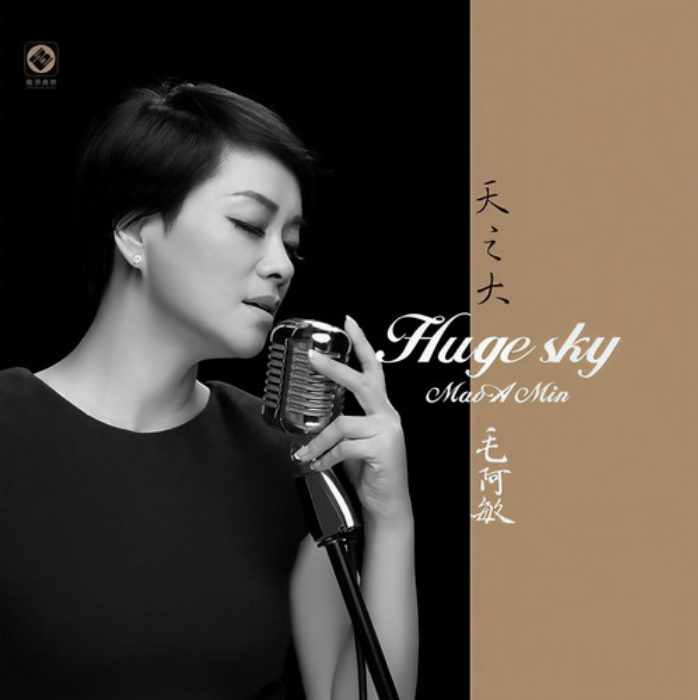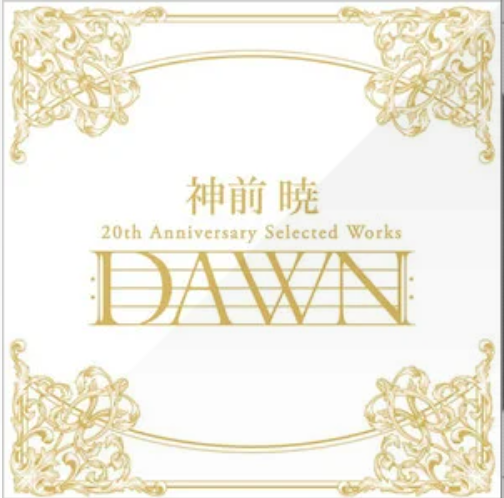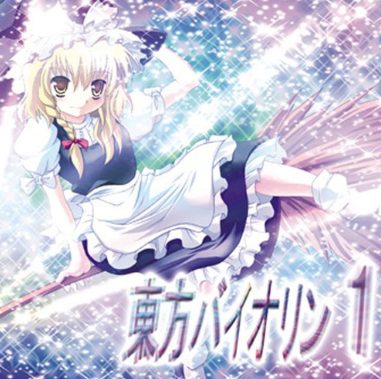Music Diary: Music Appreciation – Issue 3
1. Song: 愛♡スクリ~ム! (Love♡Scream!), Artist: AiScReam, Album: 愛♡スクリ~ム!

This is an extremely popular LoveLive song that has gone viral from Douyin to Bilibili. AiScReam is a new cross-project limited unit from the “Love Live!” series. As the title track for this new group, considerable effort was put into it. First, the three members of this group come from three different eras of the “Love Live!” series (Aqours, Nijigasaki, Liella!). Being a limited unit, both from marketing and practical perspectives, means this group and song are unique and unrepeatable, which has sparked high expectations and collection desires among fans (like this BLOG owner).
Deconstructing this song is quite simple – the most important thing is understanding the multiple meanings of the title. It cleverly combines the group name, song title, and lyrical meaning through multiple permutations and combinations, deepening impressions through catchy repetitive singing.
- Ice Cream: The core imagery of the song, representing sweetness, colorfulness, and joyful things.
- Ai Scream (Love’s Scream): Directly expresses the core theme of idols conveying love to fans.
The lyrics throughout are quite straightforward, revolving around “love,” “liking,” “conveying feelings,” and “ice cream.” For example, “届け!大好き!” (Reach you! I really like you!). This perfectly fits what an idol song needs to express. In the arrangement, strong guitar riffs and drum beats form the song’s skeleton, with numerous 8-bit game sound effects, playful synth tones, and sudden sound effects (like explosions, cheers) added throughout, creating a chaotic, joyful, highly anime-concentrated “denpa” feeling. This style bombards listeners’ brains with information, producing a wonderful sense of pleasure. Throughout the song’s structure and arrangement, you can see “empty beats” and “call & response” sections designed for live interactions – this is a special treatment method for idol songs, leaving gaps for fans to cheer. The entire song maintains extremely high speed from start to finish, giving an unstoppable feeling of excitement.
2. Song: 相思 (Longing), Artist: Mao Amin, Album: 天之大 (The Vastness of Heaven)

To understand the song “Longing,” you must first understand its creative background. As the ending theme for the TV drama “Journey to the West: Sequel,” their symbiotic relationship is like that of Bo Ya and Zhong Ziqi. “Journey to the West: Sequel” was highly controversial in its time, with its most notable feature being the “memetic” fight scenes – one action played forward and backward three times. This makes the viewing experience quite “magical” and “amusing” by today’s standards. However, setting aside the action design, its plot core is exceptionally serious and tragic: subversive deity settings, the complex humanity and divinity of Wutian Buddha, and the love tragedy running throughout the series. In fact, until the end of the entire series, all the love stories that appeared had tragic endings. When the ending song plays, Mao Amin’s rich and compassionate singing instantly immerses viewers in the characters’ endless love and pain. It filters out the roughness in production, purifying and elevating its tragic core.
Next, let’s appreciate the lyrics. “红豆生南国” (Red beans grow in the southern land) directly quotes the Tang Dynasty poet Wang Wei’s “Longing.” These five words themselves are cultural DNA about “longing” in Chinese cultural circles. They don’t need much explanation to immediately awaken listeners’ cultural memories in their blood. “最不屑一顾是相思” (The most disdainful thing is longing) is the highlight of the entire lyrics and best reflects the “subtlety” of Chinese culture. The song sings “the most disdainful,” but actually expresses “the most unforgettable.” This struggle between saying one thing and meaning another is precisely what makes “longing” most tormenting – the more you want to forget, the more clearly you remember; the more indifferent you appear, the more turbulent your heart becomes. This is much more sophisticated and painful than directly crying “I miss you so much.”
Finally, there’s the singer Mao Amin. Her vocal tone is quite distinctive – not a clear or sweet female voice, but rich and broad with the sedimentation of years. Her voice has an innate “da qingyi” (lead female role in Chinese opera) quality – grand, dignified, while containing powerful inclusiveness and compassion. This vocal tone is perfectly suited for singing subtle and delicate themes like “longing.” Many covers fail to restore the charm of Mao Amin’s version because, ultimately, she’s not singing about a young woman’s self-pity, but rather the gentle sigh of someone who has experienced life’s vicissitudes for all the lovesick youths in the world – fireworks embracing romance, true love nowhere to be found.
3. Song: Suite from the Ballet Swan Lake op.20 1.Scene, Album: the best of CLASSICAL MUSIC

Tchaikovsky’s Swan Lake is not only the musical soul of the entire ballet but also one of the most deeply ingrained melodies in classical music history. In 1875, Tchaikovsky accepted a commission from the Bolshoi Theatre in Moscow to create music for the ballet “Swan Lake.” At that time, ballet music was generally regarded as subordinate to dance, with functionality outweighing artistry. However, Tchaikovsky approached it with the rigorous attitude and rich emotion of symphonic composition, intending to elevate ballet music to unprecedented artistic heights. Unfortunately, the 1877 premiere of “Swan Lake” was unsuccessful. Reasons included the ballet dancers’ technique, clumsy choreography, and the orchestra’s inability to adapt to music that was “too symphonic,” all leading to the performance’s failure. This greatly disappointed Tchaikovsky, who felt his painstaking work had been ruined. It wasn’t until 1895, after Tchaikovsky’s death, that famous choreographers Marius Petipa and Lev Ivanov re-choreographed “Swan Lake” at the Mariinsky Theatre in St. Petersburg. They deeply understood the dramatic nature and depth of Tchaikovsky’s music, creating timeless dance arrangements. This performance was hugely successful, and “Swan Lake” became synonymous with ballet, while Tchaikovsky’s music was recognized as an immortal masterpiece.
To allow this outstanding music to be performed independently from the ballet in concerts, Tchaikovsky personally selected the most brilliant sections, compiling them into the “Swan Lake” Suite (Op. 20a), with “Scene” being the opening of the suite and the core musical motif of the entire work. The dance piece depicts the classic scene where Prince Siegfried first encounters Princess Odette, who has been turned into a swan by a curse, by the lake. The moonlit lake shimmers, a group of swans gracefully swim by, and the most noble one (Odette) captures the prince’s complete attention. The music perfectly captures this moment filled with mystery, sorrow, and beauty. The piece begins with the string instruments’ low tremolo, like a chill in the deep forest night, full of unknown and unease. Immediately following, the harp’s crisp arpeggios fall like moonlight on the lake, instantly breaking the silence, bringing a touch of magic and poetry. The oboe plays that timeless main melody. This melody is extremely beautiful, but its foundation is deep sorrow. It doesn’t sound like human crying, but rather a restrained, noble sadness, like a swan silently recounting its unfortunate fate under the moon. You feel a loneliness and beauty that strikes directly at the heart. As the French horn and entire orchestra join, the main melody builds to a magnificent climax. At this point, the music is no longer personal expression but an epic, fate-like cry. The emotional tension reaches its peak, as if you can see the prince and swan princess’s insignificance and struggle before fate, full of tragic power. Finally, the music gradually subsides, returning to the mysterious atmosphere of the beginning, leaving endless imagination and a faint trace of melancholy, as if the swan’s figure disappears into the distant lake, everything returns to calm, but that sorrow has been deeply imprinted in the listener’s heart.
Tchaikovsky completely changed the status of ballet music. He proved that ballet music could possess symphonic structure, depth, and independent artistic value. After “Swan Lake,” works like Stravinsky’s “The Firebird” and Prokofiev’s “Romeo and Juliet” continued this “symphonic” creative concept. And the main melody of Swan Lake has transcended the realm of classical music, becoming a global cultural symbol. Whether in movies, advertisements, or figure skating competitions, when this melody plays, people immediately think of elegance, romance, tragedy, and beauty. It has become a common artistic language. This piece, especially the oboe solo within it, has become a touchstone for measuring musicians’ musical expressiveness. It requires performers not only to have superb technique but also deep musical understanding and emotional expression ability.
4. Song: God knows…, Artist: Aya Hirano, Album: TV Anime ‘The Melancholy of Haruhi Suzumiya’ Imaginary ENOZ featuring HARUHI

“God knows…” is the iconic insert song from the Japanese phenomenon anime “The Melancholy of Haruhi Suzumiya,” performed by Aya Hirano, the voice actress for the main character Haruhi Suzumiya. The song first appeared in the 2006 version anime episode 12 (2009 version episode 26) during the cultural festival scene, and due to its highly infectious rock style and fluid animation filled with love and effort, it became a classic in anime music history.
The song features lyrics by Aki Hata, composition and arrangement by Satoru Kōsaki, with high-speed rock as the foundation, fully embracing pop elements. The prominent electric guitar riffs and strong drum beats in the arrangement form the main skeleton of the song, creating an atmosphere full of passion and momentum. The intro begins with rapid guitar picking, instantly grabbing listeners’ attention, followed by Aya Hirano’s powerful vocals joining, pushing the emotion to a climax. The song’s rhythm is tight, with clear melodic lines, especially in the chorus where high-range bursts and repeated sections (like “God knows…”) strengthen memorability. This arrangement not only reflects Haruhi Suzumiya’s character traits of passion and stubbornness but also conveys the theme of “fearless progress” through musical language.
The lyrics, from a first-person perspective, depict the protagonist’s determination to persist in beliefs and move forward courageously despite confusion. The opening line “渇いた心で駆け抜ける” (Running through with a thirsty heart) immediately states the theme – a strong desire and persistence for goals or emotions. Subsequent lyrics like “傷つくことなんて 怖れないよ” (I’m not afraid of getting hurt) further emphasize the character’s resilience when facing difficulties. Aki Hata’s lyrics cleverly combine the emotional struggles in the anime’s plot (like Haruhi’s subtle feelings for Kyon) with broader youthful confusion, allowing the song to transcend the plot itself, becoming a universal celebration of “youth and courage.” The repeated “God knows…” in the chorus is both like questioning fate and a self-declaration, suggesting that although the future is unknown, beliefs remain unwavering.
Aya Hirano’s performance is one of the key factors in this song’s success. She wasn’t a professional singer originally, but her voice carries a unique girlish quality and explosive power, perfectly matching the anime character’s setting – both the innocence of an ordinary high school student and the arrogance to change the world. In her performance, she enhances the song’s raw emotion through mixed voice transitions (like the high notes in the chorus) and slightly hoarse shouts. Especially in the anime’s live performance scene, Aya Hirano’s singing synchronizes with the character playing guitar, achieving a god-tier performance of audio-visual unity, becoming one of the famous scenes in anime history. This “voice actor as character” immersion directly influenced most subsequent school live anime performances.
“God knows…” quickly broke through anime circles after release, becoming one of the representative tracks of 2000s Japanese pop culture. It has numerous secondary creations (including covers, MADs, etc.) on platforms like Niconico and YouTube, even driving the trend of “anime song rock style.” The song has been included multiple times in Aya Hirano’s personal albums and serves as the finale in concerts, inspiring full audience participation. For many viewers, this song is not only a symbol of the Haruhi Suzumiya series but also carries their passionate memories of youth. Its success also demonstrates how quality anime music can transcend media limitations through emotional resonance, gaining lasting vitality.
5. Song: 天空の悲恋歌 (Sky’s Tragic Love Song), Artist: TAMUSIC, Album: 東方バイオリン1 (Touhou Violin 1)

“Sky’s Tragic Love Song” is one of the early representative works of the Japanese doujin music circle TAMUSIC, included in the 2006-released doujin album “Touhou Violin 1.” This piece is an arrangement of the stage 4 mid-boss theme “The Capital City of Flowers in the Sky” from the Touhou Project game “Touhou: Perfect Cherry Blossom,” with violin and piano as core instruments, reinterpreting the original’s ethereal and sorrowful atmosphere.
As an instrumental work, “Sky’s Tragic Love Song” takes classical chamber music as its foundation, blending Touhou Project’s distinctive fantasy style. The piece uses violin as the main melody carrier, creating vast and melancholic narrative feeling through long, continuous bowing and delicate vibrato. Particularly in the solo section’s cadenza, it showcases the performer’s (TAMUSIC core member A’) superb technique and emotional tension. Piano serves as accompaniment, providing background with broken chords and gentle arpeggios, maintaining spatial transparency while strengthening melodic layers. The conversational arrangement between piano and violin (like echoing melodies, intermittent pauses) enhances the piece’s dramatic quality. The 8-minute track has clear structure – transitioning gradually from a quiet introduction to an intense middle section, then returning to a lonely finale, forming a complete emotional arc. This design both respects the original game’s scene and gives it independent artistic expression.
The title “Sky’s Tragic Love Song” directly points to the core theme: a tragic love destined to fail, occurring in the sky. The original “The Capital City of Flowers in the Sky” relates to the character “Lily White” (spring fairy), symbolizing fleeting beauty and the sorrow of seasonal changes. TAMUSIC elevates this “briefly blooming beauty” to a more universal meaning of “regret and nostalgia” through the violin’s poignant tone. Despite having no lyrics, the music itself tells a story through melodic fluctuations and timbre changes. The high-frequency violin resembles whispers in the clouds, the strong playing in the middle and later sections resembles emotional outbursts, finally ending with a fade-out, suggesting memories dissipating – this “wordless song” instead leaves listeners with broader imagination space.
TAMUSIC demonstrates the professionalism of doujin music circles in this piece, extensively using double stops, harmonics, and glissando techniques, especially the combination of rapid spiccato and vibrato in the middle section, showcasing both technical ability and accurately conveying emotions of struggle and desire intertwined. Although a doujin work, the recording quality is extremely high, with clear details of violin resonance and piano articulation, reflecting TAMUSIC’s consistent pursuit of sound quality.




